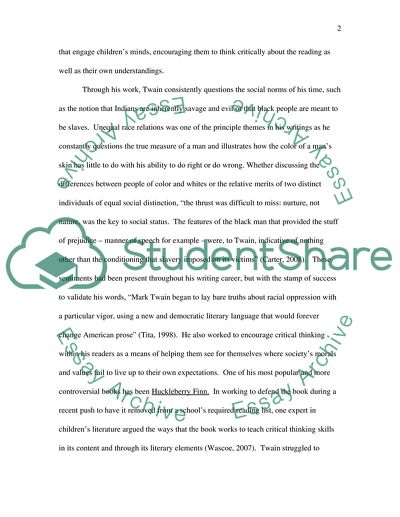Cite this document
(Mark Twain and a Common Message of the Importance of Independent Essay, n.d.)
Mark Twain and a Common Message of the Importance of Independent Essay. Retrieved from https://studentshare.org/literature/1719530-author-study
Mark Twain and a Common Message of the Importance of Independent Essay. Retrieved from https://studentshare.org/literature/1719530-author-study
(Mark Twain and a Common Message of the Importance of Independent Essay)
Mark Twain and a Common Message of the Importance of Independent Essay. https://studentshare.org/literature/1719530-author-study.
Mark Twain and a Common Message of the Importance of Independent Essay. https://studentshare.org/literature/1719530-author-study.
“Mark Twain and a Common Message of the Importance of Independent Essay”, n.d. https://studentshare.org/literature/1719530-author-study.


